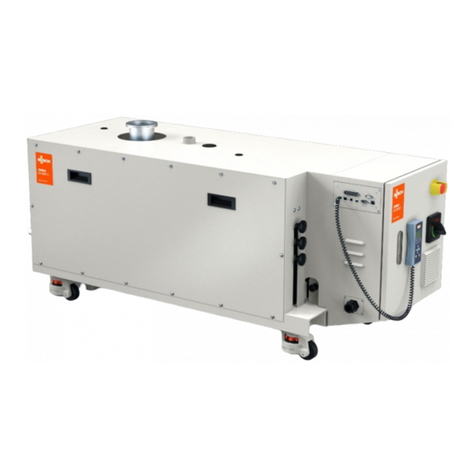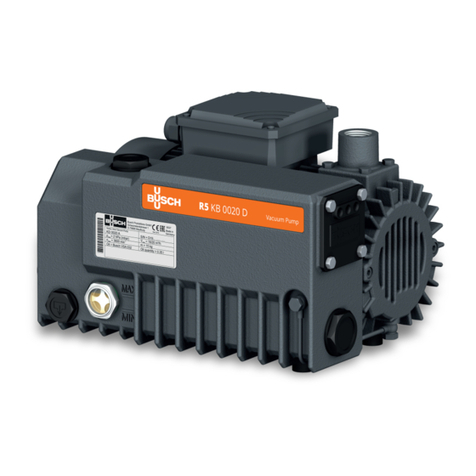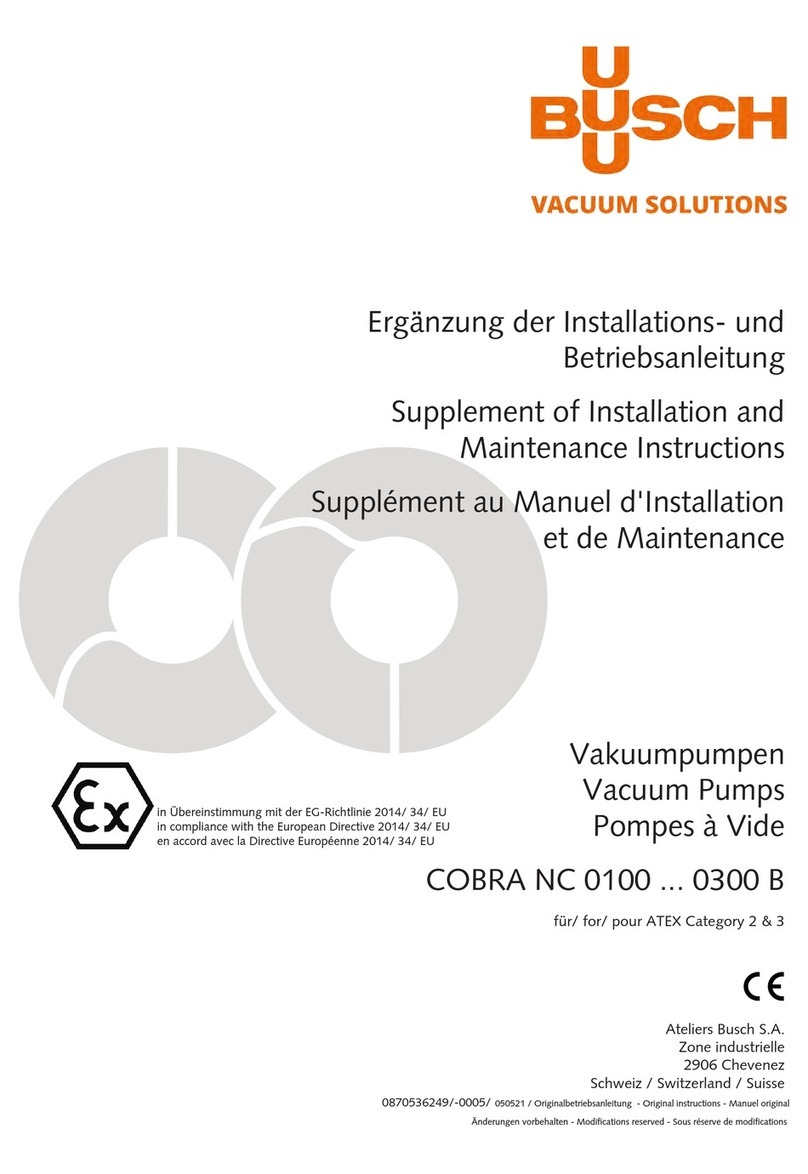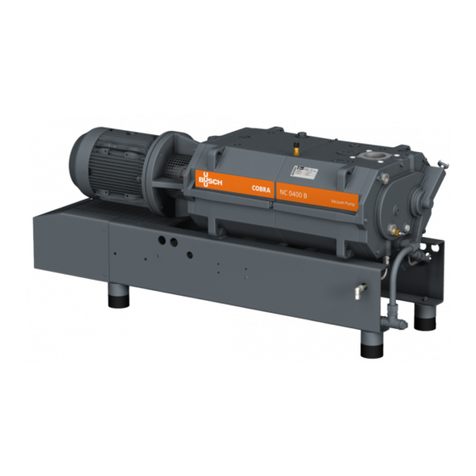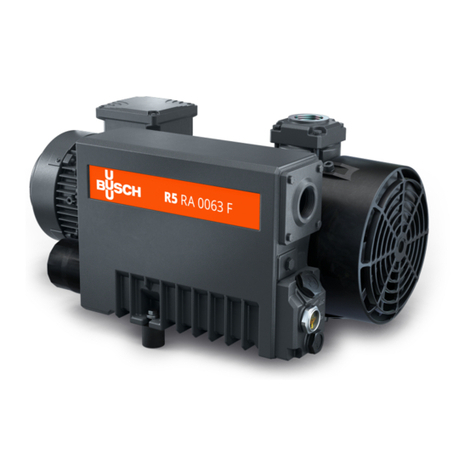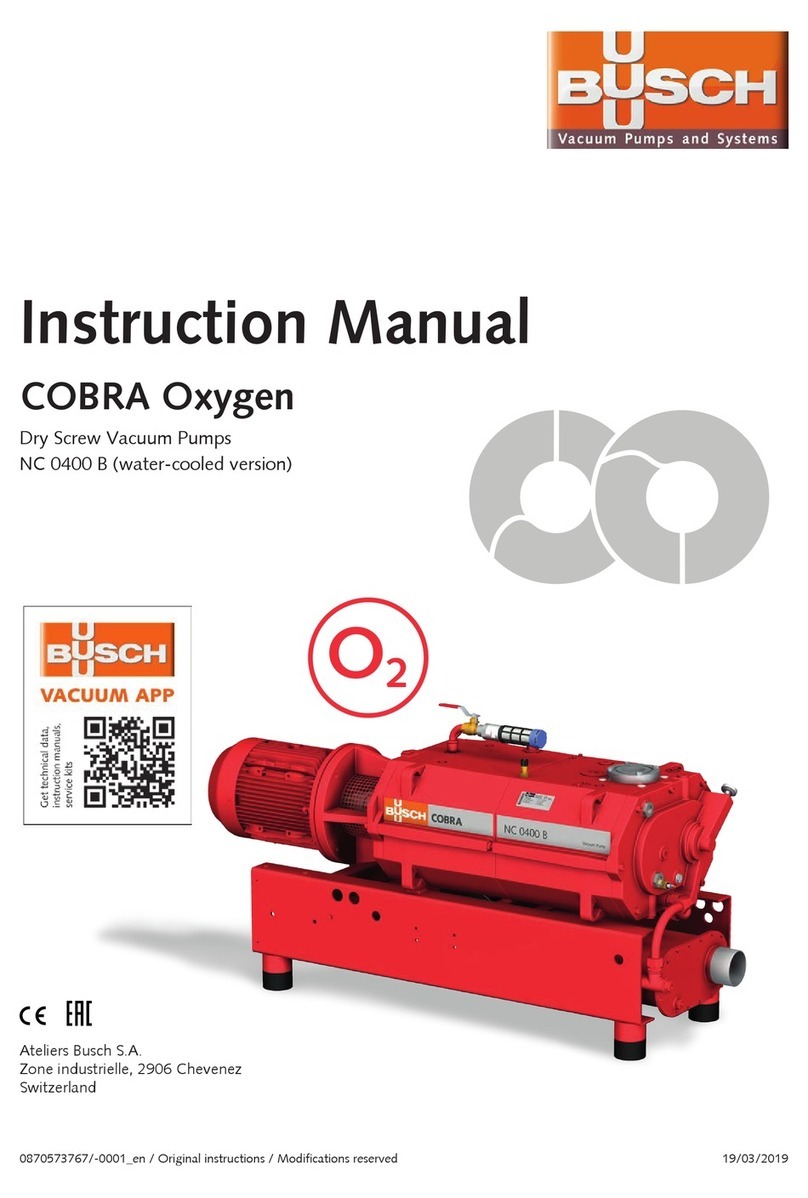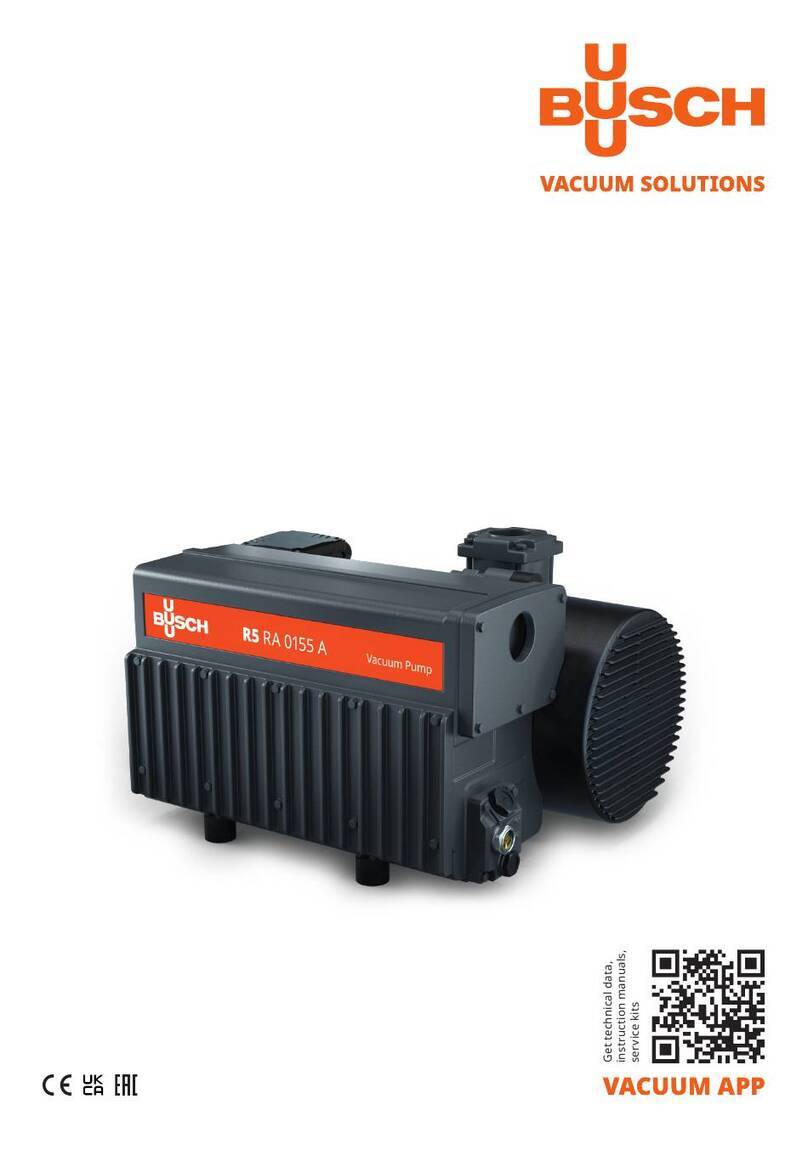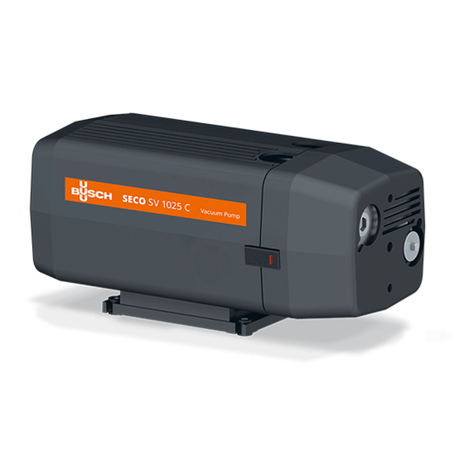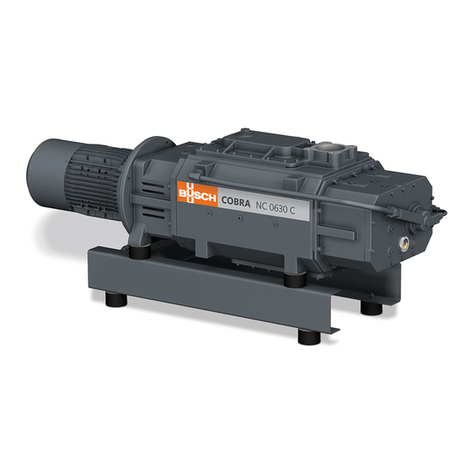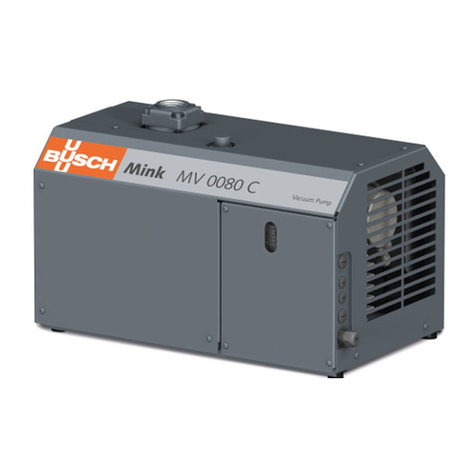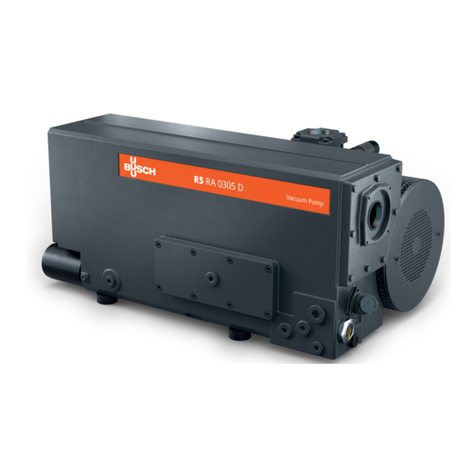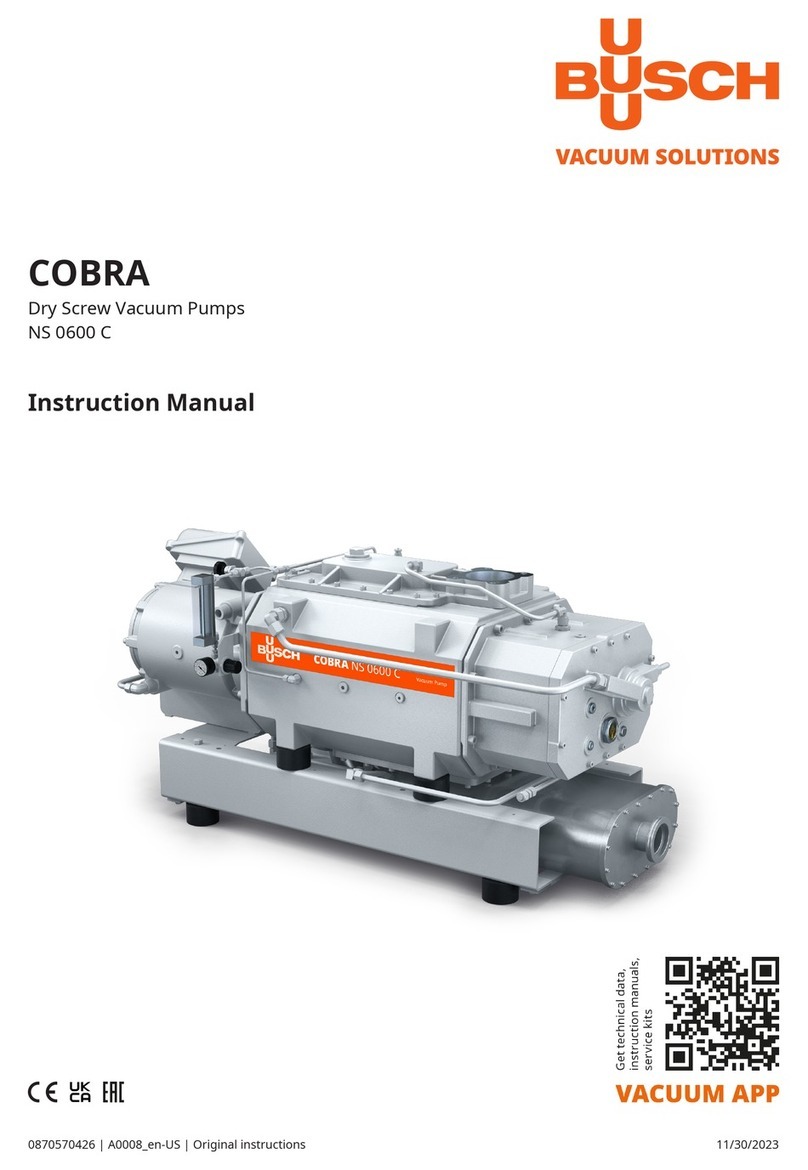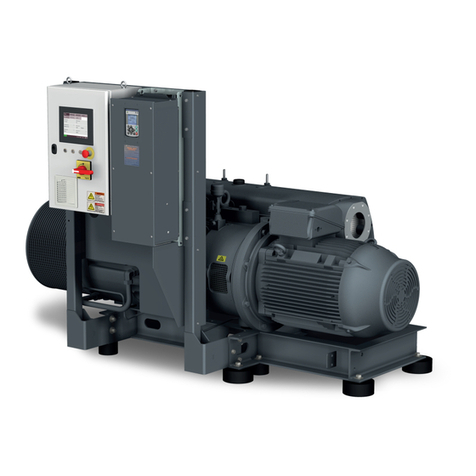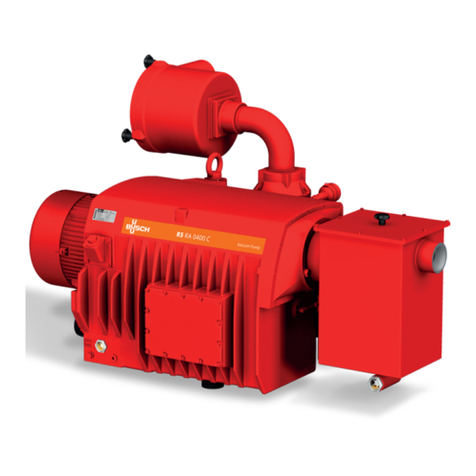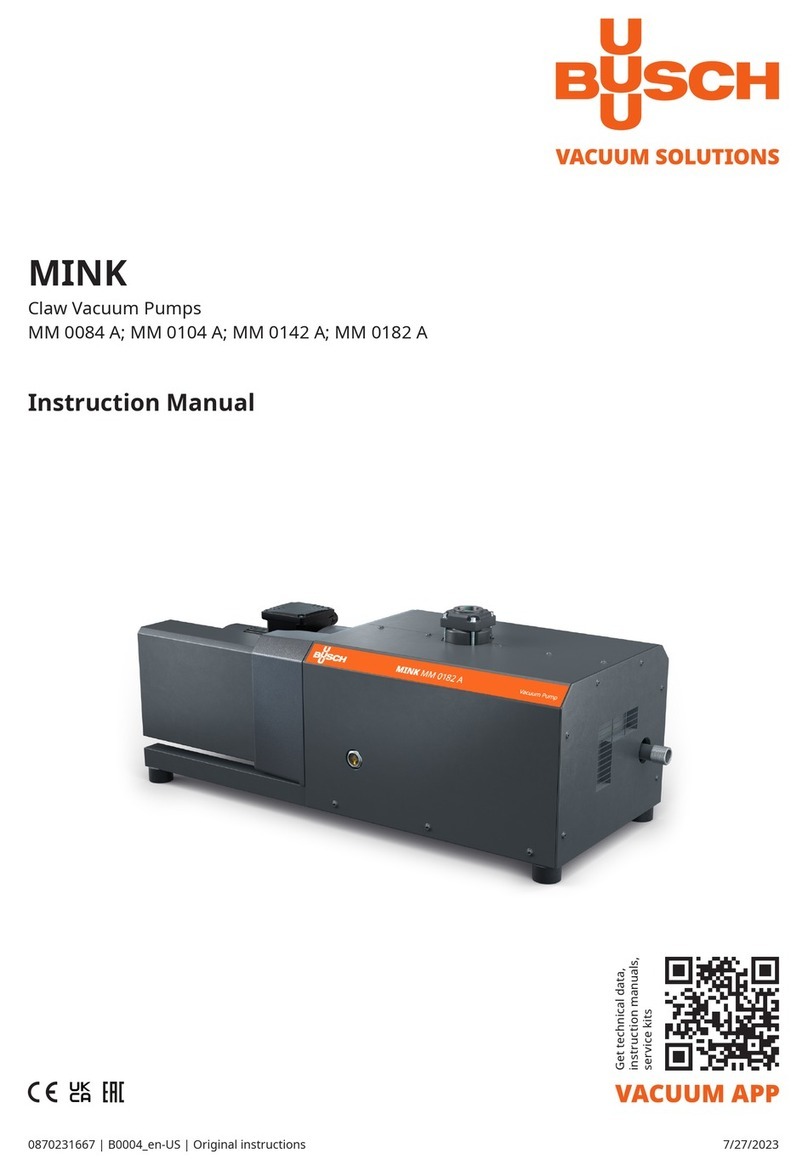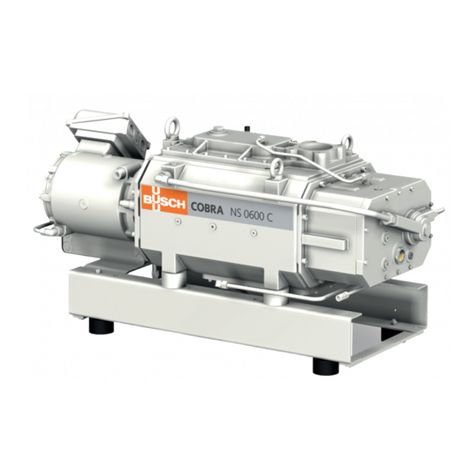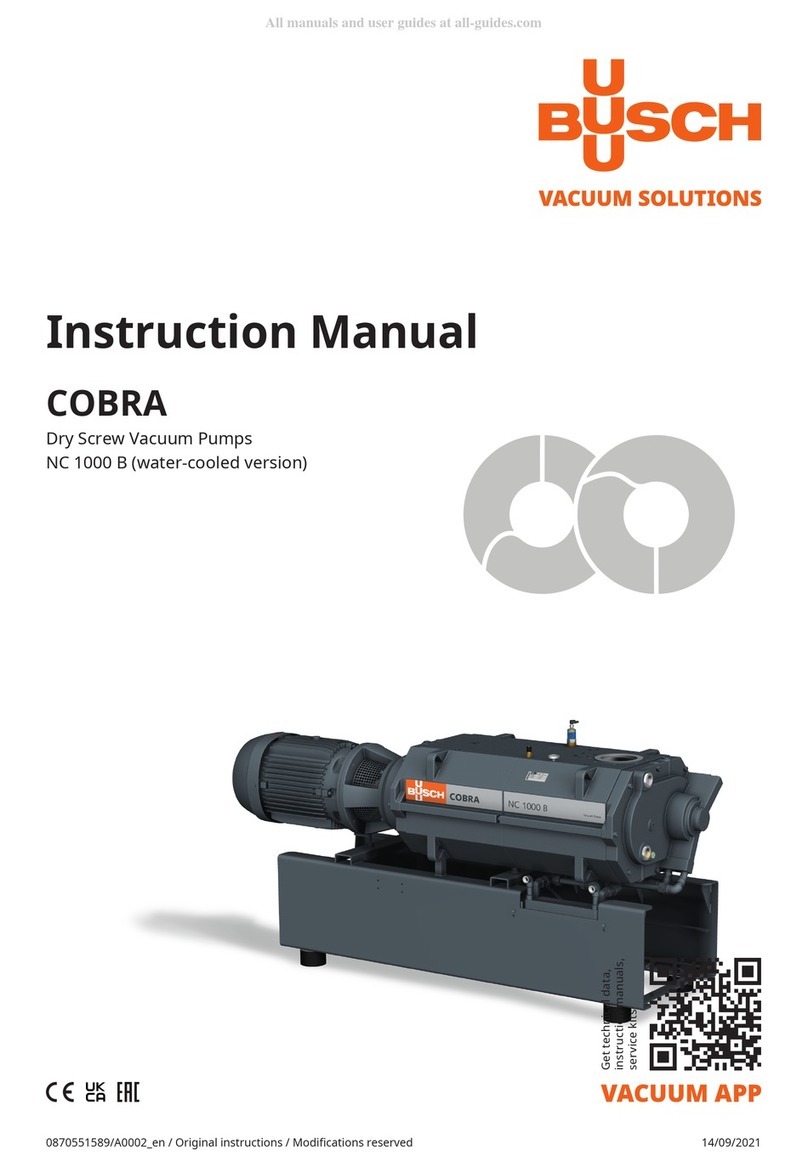
CAUTION
The vacuum pump emits sound of high intensity.
Risk of hearing damage!
Users spending a longer period of time in the vicinity of a non-insu-
lated vacuum pump must wear suitable hearing protection.
lMake sure that the vacuum pump and the primary pump are swit-
ched off and cannot accidentally be switched on again.
lMake sure that protective devices will not be disconnected
lMake sure that cooling air inlets and outlets are not covered or
obstructed and that the cooling air flow can circulate without
obstruction
lMake sure that the “Installation Prerequisites” (see “Installation
Prerequisites and Commissioning”) are followed, particularly follow
those instructions that ensure sufficient cooling
Cooling water
In order to guarantee the flow regulation of the cooling water, it is
recommended to install a regulating valve at the inlet of the cooling
circuit.
To drain the cooling water, the hoses have to be removed and the
cooling water system blown through with compressed air, until all the
water has been completely removed.
Advice: When there is danger of frost, the cooling water must be fully
drained at a standstill of the pump, as described above.
Limitations of use
DP = differential pressure between the outlet and the inlet of the
vacuum pump. See table “Technical Characteristics”. Do not exceed
the values given in the table.
Maintenance
For all maintenance work, the vacuum pump or the vacuum system
must be switched off and it must be ensured that it cannot accidentally
be switched on again.
Any dismantling of the pump must be executed by qualified personnel
only. Before dismantling, the end user of the vacuum pump must fill in
a “Certificate about Absence of Danger” which will inform about
possible risks and dangers and corresponding measures.
Without this document duly filled in and signed by an authorised
person, the pump cannot be dismantled.
CAUTION
During operation, the surface of the vacuum pump may exceed
temperatures of 70°C.
Risk of burns!
lPrior to any work that requires touching the vacuum pump, let the
vacuum pump cool down
When draining the oil:
uLet the vacuum pump cool down for no more than 20 minutes
lPrior to disconnecting the inlet or discharge lines, make sure that
these pipes/ lines have been vented to atmospheric pressure
Maintenance Schedule
NOTE: The maintenance intervals depend very much on the individual
operating conditions. The intervals given below must be considered as
starting values which should be shortened or extended as appropriate.
Particularly heavy duty operation, e.g. high dust loads in the
environment or in the process gases, other contaminations or ingress of
process material, can make it necessary to shorten the maintenance
intervals significantly.
Weekly
lCheck the oil level (see “Checking the oil”)
Monthly:
lMake sure that the vacuum pump and the primary pump are swit-
ched off and cannot be accidentally be switched on again
lCheck the vacuum pump for oil leaks - in case of leaks have the
vacuum pump repaired (Busch service)
In case of operation in a dusty environment:
uMake sure that the working area is free from dust and dirt,
clean if necessary (see “Every 6 Months”)
Every 6 Months:
lDispose of the used oil according to applicable environmental pro-
tection regulations
lDrain the oil in the gears and the bearing housings (see “Draining
the Oil”)
lMake sure that the working area is free from dust and dirt, clean if
necessary
lMake sure that the oil level at the gears and bearings is between
the Min and MAX markings of the oil sight glasses
lThe electrical connection must be checked by qualified personnel
Yearly:
lMake sure that the oil level at the gears and bearings is between
the MIN and MAX markings of the oil sight glasses
Every 16000 Operating hours, at the latest after 4 years
lHave a major overhaul done on the vacuum pump (Busch service)
Checking the oil
Checking the oil level at the gears and bearing
housings
lMake sure that the vacuum pump and the primary pump are swit-
ched off and cannot accidentally be switched on again
lRead the level on the oil sight glasses (OSG,33/220)
In case the level has dropped below the MIN-marking:
uTop up with oil (see “Topping up Oil”)
In case the level is above the MAX-marking:
uChange the oil (see “Change the oil”)
Dispose of the used oil in compliance with applicable environmental
protection regulations.
NOTE: Under normal conditions, there should be no need to top up
with oil during the recommended oil change intervals. A significant
level drop indicates a malfunction (see “Troubleshooting”).
CAUTION
Make sure that the vacuum pump is switched off and cannot acci-
dentally be switched on again
Please fill in the oil after removing the oil filler plugs on the cylinder
covers.
lRemove oil filler plugs
lTop up with oil until the oil level is in the middle of the oil sight
glasses
lPlease ensure that the vacuum pump is shut down and locked
against inadvertent start up
lRefit the oil filler plugs (OFP,250/260)
lMake sure that the oil filler plugs have been correctly fitted after
filling in the oil, so that no air can enter the pump. Too high, an oil
level must be avoided as well as this could lead to overheating of
the gears.
Maintenance
Page 9



